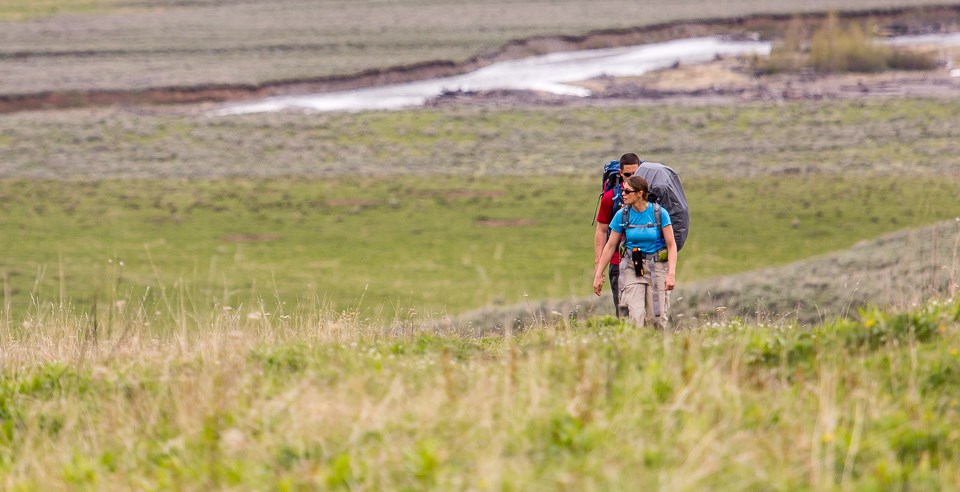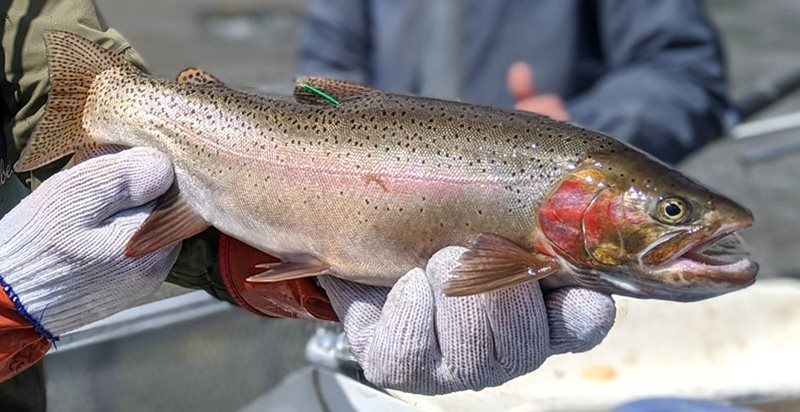Protect the Park: 8 Keys to Preventing Aquatic Invasive Species in Yellowstone
Written by Nick on April 15, 2023
The Danger of Aquatic Invasive Species in Yellowstone
If you feel that federal agencies impose some pretty silly rules and restrictions, you aren’t alone. Why on earth does a National Park Service inspector need to go through my boat every time I want to fish on Yellowstone Lake? And why can’t I wear my felt-bottomed footgear to fish?
The importance of these regulations may surprise you: the ecological processes vital to Yellowstone’s survival are being threatened by a number of aquatic invasive species in Yellowstone, as well as some that have not yet entered the park, but soon may do so.
This isn’t some boring high-school biology lesson that you’ll never apply. It’s a real problem that the people charged with preserving and protecting Yellowstone’s natural beauty work on every day.
So, how can you do your part to protect against the threat of aquatic invasive species in Yellowstone? Let’s start by reviewing the invaders who’ve already made their way into the park.
Current Aquatic Invasive Species in Yellowstone
The reason Yellowstone authorities work so hard to keep aquatic invasive species out of the park is simple: Once they’re in, they’re usually impossible to get rid of. Not to mention the considerable expense of reducing their impact on native species.
Currently, there are three aquatic invasive species in Yellowstone causing real damage:
- Myxobulus cerebralis is a parasite that causes what’s known as “whirling disease” in cutthroat trout and other species.
- Dense colonies of New Zealand mud snales compete with native species.
- A small snail known as red-rimmed malania, imported as early as the 1930s by the aquarium trade, was identified in 2009 in the warm swimming area where the Boiling River and Gardner River meet.
All told, there are eight aquatic invasive species in Yellowstone right now. There are five nonnative fish, two types of mollusks, and myxobulus cerebralis.
Potential Threats by Incoming Aquatic Invasive Species
Some aquatic invasive species that have not yet made their way within Yellowstone’s boundaries pose severe threats. These include:
- Viral hemorrhagic septicemia
- Hydrilla
- Flowering rush
- Asian carp species
- Asian Clams
- Eurasian watermilfoil
- Zebra Mussels
- Quagga Mussels
In fact, the park says biologists believe a number of these species are moving toward Yellowstone. Should they arrive inside the park, these species could have significant ecological, economic, and recreational impacts.
For example, should they become one of the aquatic invasive species in Yellowstone, Asian carp would out-compete native fish. They can also transmit disease.
And zebra mussels, which tend to attach to watercraft and can survive out of the water for quite a long time, can severely impact ecosystems by draining the food web.
These are just a few ways that new aquatic invasive species in Yellowstone could change the park for the worse. Here’s what we can all do to help.
8 Ways to Limit the Spread of Aquatic Invasive Species in Yellowstone
There are a few things we can all do to minimize the impact of these aquatic invasive species by preventing or limiting their spread.
- Do not use live bait when fishing in Yellowstone National Park. It’s illegal.
- Do not move fish among different waters in Yellowstone. For example, don’t take a fish from the Firehole River and deposit it in Yellowstone Lake. This, too, is illegal.
- Don’t bring any species of fish from outside the park into Yellowstone. This is also illegal, and is one of the ways that invasive species continue to spread throughout the United States.
- Get your boat or watercraft inspected by the National Park Service before you launch. It may have to be decontaminated, and the best thing you can do to help is by cooperating with inspectors.
- Remove all debris — including animals like mussels or plant material — from your boat, boots, and gear before entering Yellowstone.
- Never dump water from elsewhere into Yellowstone rivers.
- When draining your bilge or any other compartment, do so well away from all park waters.
- Before visiting Yellowstone, use high-pressure water at least 140F to clean your boat, trailer, and all equipment. Alternatively, dry all your gear in the sun for five days.
It may sound like a lot, but it’s impossible to overstate the importance of ensuring we don’t introduce any new aquatic invasive species in Yellowstone National Park. This way, we can maintain the park for years to come so future generations can enjoy it just as we have.
Once you’ve completed your anti-invasive species tasks, you’re ready to head to Yellowstone! Check out this list of three fantastic places to fish inside Yellowstone National Park.
Anglers should also check out these six critical rules and regulations for fishing in Yellowstone.

